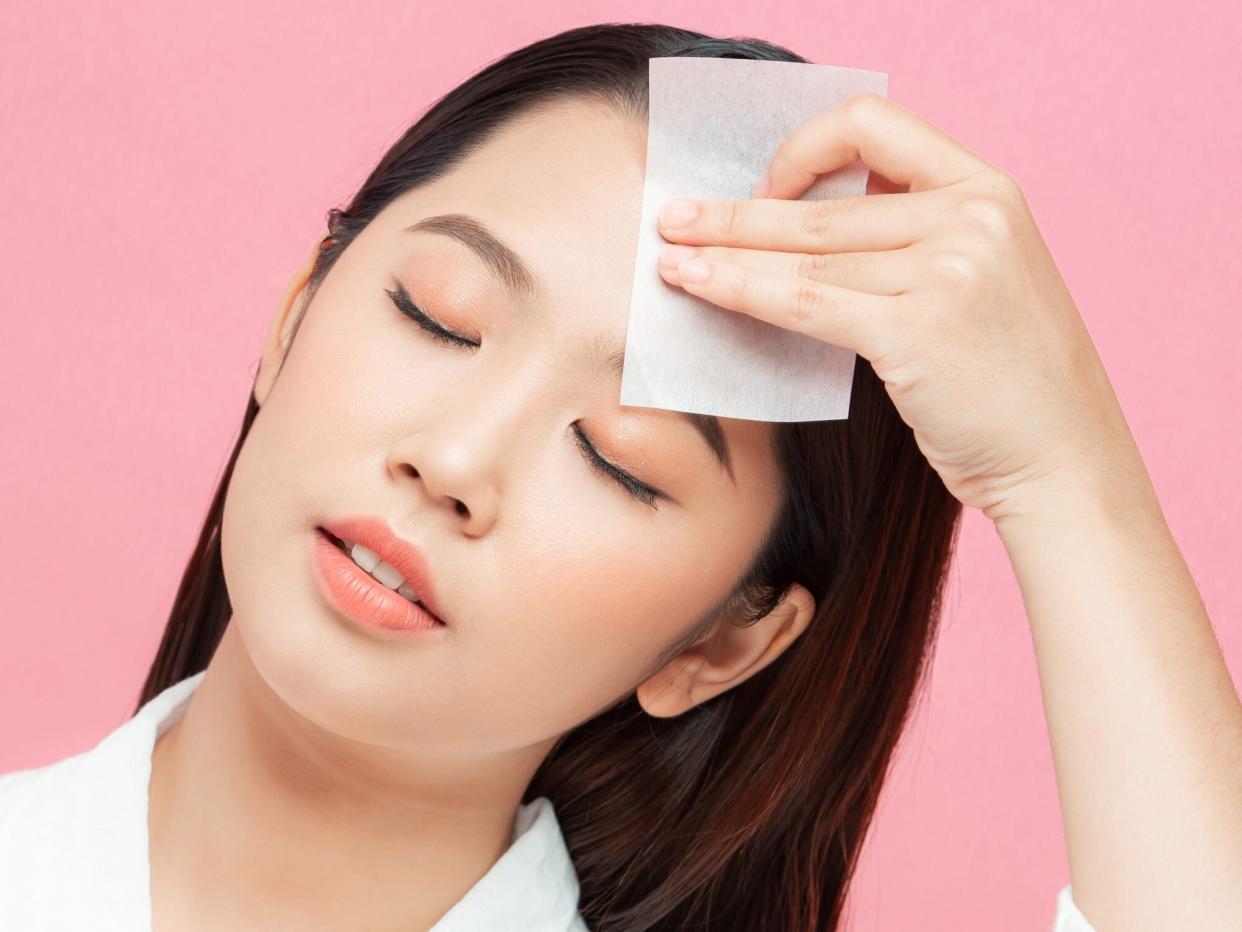What Is Sebum? This Is What You Need to Know to Keep Skin Balanced

Makidotvn/Getty Images
If you had to choose a relationship status between you and your sebum, it'd probably be "It's complicated." On one hand, sebum helps keep your skin moisturized and healthy, which lends to that highly coveted natural glow-y effect. On the other, too much sebum can cause a not-so-lovely slickness that exacerbates acne and makes pores look big. And when you don't have enough sebum? Hello dry, tight, itchy skin.
With dermatologist insight, we're giving you the full DL on what sebum is, the major role it plays in our skin health, and how to find balance once and for all.
What Is Sebum Anyway?
Sebum is the oily substance produced by skin and, more specifically, by the sebaceous glands. "It is made up of fatty acids, waxes, and sugars that help protect your skin and keep it moisturized," explains Marie Hayag, M.D., a board-certified dermatologist and founder of 5th Avenue Aesthetics in New York City. Because we have so many pores on our face, we tend to notice sebum accumulation here versus other parts of the body.
Why Balanced Sebum Levels Are Important
Balanced sebum levels help keep our skin smooth, moisturized, and healthy. When our body produces too much sebum, it can cause our skin to look and feel greasy, make pores appear larger, and can even trigger or exacerbate acne. When we don't have enough, our skin becomes dry and tight, and can sometimes look and feel rough, itchy, and sensitive. Extreme cases translate to cracked and compromised skin.
That's not all. "Sebum provides protection against moisture loss, and acts as a physical barrier against bacteria and fungi," adds Dr. Hayag. "The lipids in sebum also protect against UV radiation and help transport lipid soluble antioxidants to the skin. Other components of sebum, including squalene and fatty acids, have anti-inflammatory properties as well."
What to Do If You Have Too Much Sebum
People whose sebaceous glands produce more sebum than usual tend to have oily and greasy skin. This excess oil can trap dirt, debris, dead skin cells, and bacteria in their pores, which may lead to acne, blackheads, and whiteheads.
"An overproduction of sebum is [often] a result of hormone fluctuations, lifestyle factors, and/or medications," says Dr. Hayag. Oily skin is also more commonly seen among those in their teens through mid twenties, when hormonal fluctuations are more extreme. If you're dealing with too much sebum, one of the best things you can do is take a gentle and consistent approach to skincare:
Cleanse: Wash your face with a mild cleanser in the morning and evening. Overwashing can backfire and cause even more sebum production.
Moisturize: Use a moisturizer each time you cleanse. Stay away from heavy, oil-based products and stick to water formulations instead.
Exfoliate: Dr. Hayag also recommends incorporating an AHA or BHA exfoliant, such as glycolic acid or salicylic acid, two to three times per week. This will help with acne too.
Clay Mask: If you want to help combat large pores, apply a clay mask once every week or two.
Acne Treatments: "Acne that results from excess sebum can be treated with topical or oral antibiotics, corticosteroids, and retinoids," Dr. Hayag says.
How to Deal With Too Little Sebum
If your skin feels dry, flaky, itchy, tight, or otherwise irritated, you likely fall into the "not enough sebum" camp. Age is a big factor here. Though we may get wiser as we grow older, we tend to get a little bit dryer too.
"Our hormones drop with aging, and sebaceous glands produce less oil," says David. J. Goldberg, M.D., a board-certified dermatologist at Schweiger Dermatology Group. "This is only aggravated by cold [and dry] climates where the air is naturally less humid."
Additional causes of low sebum production include indoor heating, exposure to harsh chemicals, poor diet, low water intake, medications, and strong skincare exfoliants. Lifestyle adjustments and a super-hydrating skincare routine can help boost skin moisture:
Oil Cleanse: Swap in an oil or balm cleanser for a more moisturizing wash. You can also opt to wash your face only once in the evenings.
Layer Your Moisturizes: Layering moisturizers can help your skin get more of the hydration it craves. After cleansing, apply a hydrating essence or toner, hyaluronic acid serum, and then a rich, oil-based cream.
Take Warm, Short Showers: Long and hot showers can strip your skin of the sebum that's there. Keep it quick and avoid steamy hot water. Applying a moisturizer within 10 minutes of showering can help too.
Hydrating Masks: In the same way deep conditioners can help bring parched hair back to life, a nourishing face mask can help boost skin moisture. Aim for a once or twice weekly application.
Drink More Water: Make sure you're getting the recommended amount of water every day. Keep in mind you need more water when it's hot or if you've been active.
Introduce a Humidifier: Dr. Goldberg says that adding a humidifier to the indoor spaces you frequent—like the bedroom, your office, or living room—can help keep skin hydrated.

